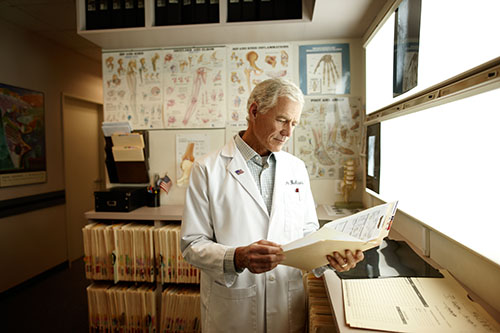
Seven Ways to Improve Medical Staff Safety
According to the Occupational Safety and Health Administration (OSHA), more workers are injured in the healthcare and social assistance sector than any other.[1] Even more sobering, the industry has one of the highest rates of work-related injuries and illnesses, which can have many negative repercussions, including adversely impacting patient care, disrupting day-to-day-operations, lowering employee morale, and increasing costs associated with workers’ compensation claims.
Here are seven ways to improve medical staff safety:
- Create a culture of safety.[2] At its core, a safety culture encourages employers and employees to work together to safeguard each other’s safety and wellbeing. Managers and medical practice leads should model the behavior they expect of employees and emphasize safety as a core value. It is important to conduct regular safety meetings with all staff and provide refresher training or safety drills to reinforce policies and procedures, such as how to properly operate medical equipment.
- Monitor staff schedules. It is not uncommon for medical personnel to work 10 or more hours per shift. A study conducted by The National Institutes of Health (NIH) determined that nurses who had slept six hours or fewer in a 24-hour period were more prone to make mistakes that could hurt themselves or patients.[3] Consider scheduling shorter shifts to reduce the likelihood of workplace accidents.
- Provide hazard communication. The OSHA “employee right-to-know” standard grants workers the right to know what hazards are present in their workplace, and how they can keep themselves safe.[4] As medical office staff often come in contact with hazardous chemicals (such as sterilants, mercury, disinfectants and anesthetics), employers must:
-
- Provide employees with information and training on hazardous chemicals in their work area, in a language and vocabulary that employees can understand.
- Maintain an up-to-date list of hazardous chemicals that are in the workplace.
- Label chemical containers and clearly identify the material inside.
- Furnish workers with Safety Data Sheets (SDSs) for each substance, providing detailed information about chemical hazards, side effects, exposure prevention and emergency treatment procedures. Manufacturers are required to provide SDSs to employers.
- Follow OSHA’s Bloodborne Pathogen standard.[5] One of the most important standards affecting workplace safety in medical offices, this standard prescribes safeguards to protect workers against injuries or illnesses caused by exposure to bloodborne pathogens.As part of the standard, workers need to be provided a written Exposure Control Plan (ECP), which identifies the tasks and procedures that could expose them to potential hazards. The ECP also covers exposure control methodologies and universal precautions, safety training and other requirements to help protect employees. (Full ECP requirements can be found on the OSHA website.)[6]
- Minimize exposure to ionizing radiation.[7] Many healthcare offices rely on x-ray technology to properly diagnose and treat patients. Unfortunately, despite its benefits, prolonged or excessive exposure to ionizing radiation can cause damaging chemical changes in cells. The extent of the damage depends on the amount and duration, as well as the areas of exposure. To keep employees safe, make sure they distance themselves from x-ray machines by stepping behind a door or into another room during the x-ray procedure to reduce or eliminate radiation exposure.
- Follow OSHA’s electrical safety requirements.[8] OSHA identifies electrical safety as one of the greatest hazards in medical offices. To prevent worker injury or illness, all equipment, such as blood pressure monitoring machines, radiation equipment and sonography equipment, should be installed and serviced by professionally trained technicians. Managers and medical practice leads should provide step-by-step safety instructions to all staff, and place appropriate signage near hazardous areas that warn people of high voltage. It is also important to properly ground electrical systems, which prevents against electric shock. For more information on preventing electrical malfunctions, consult a reputable electrician or OSHA.[9]
- Comply with signage requirements. Every business must display OSHA’s Publication 3165, or their state’s equivalent.[10] This poster provides information on workers’ rights and how to file a workplace safety violation complaint. Business owners must place this poster in an area where all employees can see it, such as a breakroom. It is available to download at no cost on OSHA’s web site at https://www.osha.gov or by calling (800) 321-OSHA[11] to request a copy.
By proactively addressing potential risks in medical offices and prioritizing medical staff safety, physicians and practitioners can reduce the possibility of workplace injuries and illnesses. For more information on creating a safe workplace, contact EMPLOYERS® today.[12]
